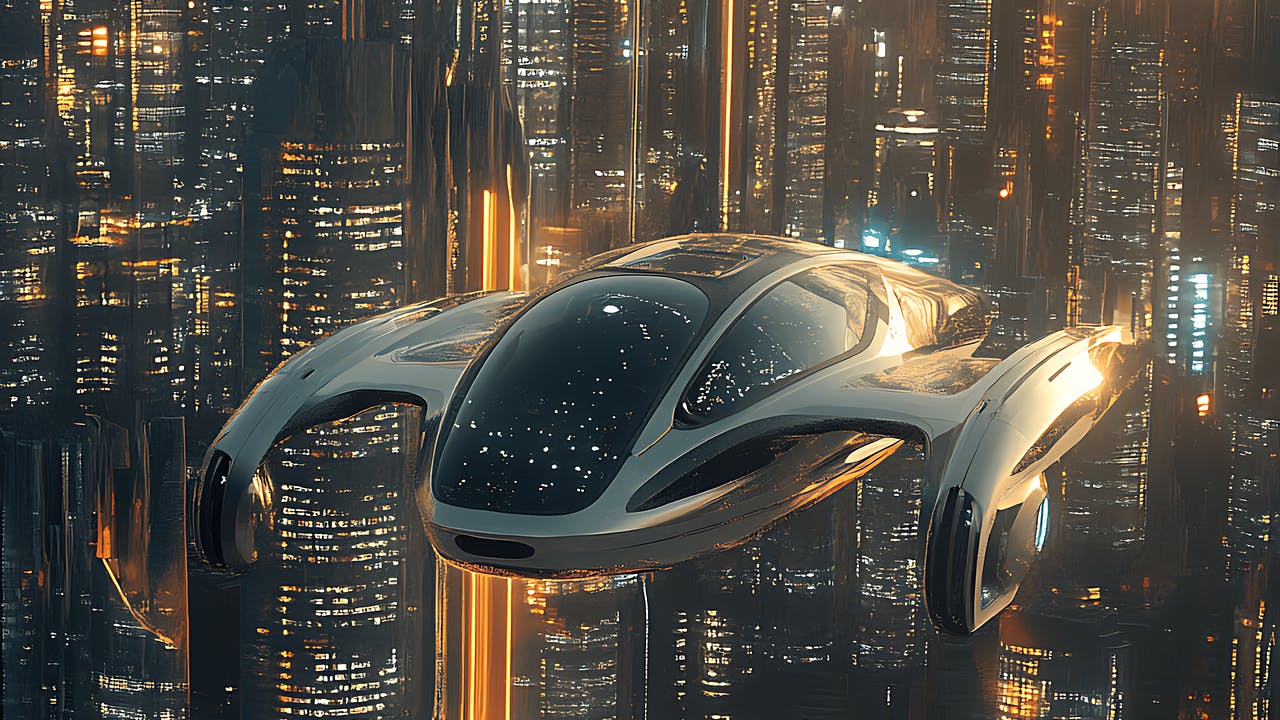Science fiction has been penning it for decades. And for the most part, we have already seen it on the big screen and in video games. Who has not dreamed or imagined being able to fly in a car? Cars that can travel anywhere by air, without the hassle of roads or traffic.
Today, this vision of the future seems more and more within reach. Terrafugia and others are just some of the companies which have already made serious progress in the creation of flying cars. In the USA, the government and various agencies have even launched projects on prototyping and integrating these vehicles into the sky over the next couple of decades. But whereas there is general optimism regarding this technology revolution, I am in a bit of a contradictory dilemma. I adore innovation but I catch myself wondering: At what cost?
The Promise of a Bright Future
The idea of flying vehicles is surely exhilarating. They have the potential to transform city transportation. Just imagine for a while if cars are freed from the constraints of traffic on roads, soaring over congested roads, reducing travel time by significantly large percentages. Not only does it speed up our day-to-day travels but it even offers possibilities for heavily congested cities where density is too high to allow for unlimited increases in roads.
The advocates of flying cars also mention the safety benefits they would bring to society. For example, autonomous driving, which would be the foundation of the cars, would automatically reduce the incidents of road accidents, which are normally caused by human error. Vehicle automation would lead to a reduction in accidents due to drowsiness, alcohol or even distraction.
Furthermore, technology employed in the production of flying cars can also offer eco-friendly alternatives. The cars are largely electric and use low-emission engines. Contrary to traditional combustion vehicles that pollute the air, flying cars would consequently eliminate or reduce transportation’s carbon footprint quite effortlessly – I admit it is a bit of an oversimplification. But…
Behind the Scenes: An Environmental Impact That’s Hard to Ignore
But with ongoing testing and prototypes becoming functional models, it is now clear that the price of this innovation on the environment can prove to be much more catastrophic than it appears. I am not here talking about the energy consumption by the cars themselves but how this new technology will affect the environment at a larger level.
There is the cost of energy in producing these items. It is not really necessary to go on about how electricity is pretty clean, since the argument has proven to be more smoke and mirrors than reality. In the USA, for instance, the majority of electricity continues to be generated from nonrenewable energy sources – coal and natural gas, among others – so electric flying cars are pretty far from completely green, particularly when you consider the entire life cycle of the batteries used.
Apart from this, the energy required for a vehicle to take off is quite high compared to that required by a regular automobile on roads. Take-off and landing in particular account for a lot of energy.
If they are used widely in our cities, the overall effect on energy would be much more drastic than we would imagine.
Noise pollution must be dealt with. Electric motors create less noise compared to the internal combustion engine. But the numerous rotors of the flying car will risk making enormous noise pollution in urban areas. This could influence the quality of life in major cities.
A Regulatory and Safety Problem
The regulatory problem is also a giant one. If the flying car becomes a reality, we would have a legal void. Who determines the rules of the skies? How can collisions be prevented? The current aviation model relies on strict regulations established by agencies such as the FAA (Federal Aviation Administration) but a paradigm shift with millions of vehicles potentially in the sky at the same time would create a whole new dimension of air traffic management. Airspace management would be overwhelmed, with problems of priority, flight trajectories and no-fly zones.
On the other hand, safety remains paramount. Autonomous technologies hold great promise, yet nothing is immune to potential technical failure. Flying over metropolitan regions, with skyscrapers and infrastructure surrounding them, is a far more difficult environment than open skies. The risk of accidents or events potentially increases and the damage could be disastrous in the event of a technical failure.
Inequality of Access: A New Luxism?
Another aspect to be remembered is accessibility to this technology. It is a given that, initially, flying cars will be accessible to a financial elite who can maintain the exorbitant cost of such an automobile. Although dreams of democratization are evoked, the reality is that technological innovation in most cases ends up coming to the benefit of the higher social classes. As a result, the dream of egalitarian transport would fail. As it is, we have the possibility of seeing the emergence of a new type of segregation of the privately flying and the privately grounded – increasingly jammed and grimy.
An Ambiguous Vision of the Future
Ultimately, flying cars are a tempting innovation in transportation. They could revolutionize the art of city travel and provide an answer to congestion and safety issues. But these benefits are offset by huge problems, particularly with respect to environmental cost, security and social inequality. In all fairness, much as I adore this innovation, I remain uncertain about its adoption within our lifestyle but perhaps not in 100 years. The dream of flight in an automobile may appear flashy, but I question whether society is ready to pay the costs – ecological, economic and social – of this technology.
The future of flying cars, as with so much technological progress, is in the delicate balance between progress and responsibility. It is our duty as a society to ensure we do not sacrifice the fundamentals, such as sustainability and equality, for the technology itself.










